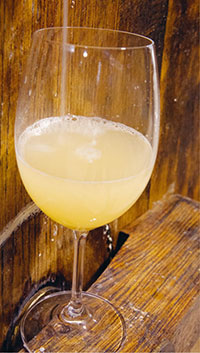
“IS THERE SUCH A THING AS NATURAL WINE?”
During the summer of 2012, inspectors from the Italian Ministry of Agriculture descended on Enoteca Bulzoni, a wine shop in Rome’s Viale Parioli, which had been operating successfully since its inception in 1929. Owners Alessandro and Ricardo Bulzoni, grandsons of the founders, suddenly found themselves slapped with a fine, as well as a possible prosecution for fraud, for selling vino naturale (natural wine) without certification.
When questioned about their actions, Italian Ministry officials explained that the phrase “natural wine” did not legally exist. Whereas other denominations and labeling terms are subject to rules and regulations that impose constraints on their usage, natural wine is not because no certification currently exists. This, argued the Ministry, meant that it was not verifiable and could, therefore, be misleading to the public, as well as damaging to other producers who did not label their wines in this way. The brothers Bulzoni paid up and went straight back to selling the stuff.
The Italian daily newspaper Il Fatto Quotidiano, which covered the story at the time, summed up the conundrum. On the one hand, you had the Bulzoni brothers, whose family had been selling wine for three generations and had always had their clients’ best interests at heart. They were making no claims to the “better-ness,” or otherwise, of natural wine, but were, instead, simply using a common phrase to isolate wines that had been produced without the use of additives. On the other hand, you had the Ministry. While it agreed in principle that the “natural wines” may indeed have been produced without additives, it also insisted that the law had to be respected. And the law, as it currently stands, has no definition for natural wine.
This is one of the biggest problems faced by natural wine producers today. There is, as yet, no official accreditation for their product, which leaves the term open to abuse and thus to criticism. As Jem Gardener of Vinceremos, a specialist organic wine shop in Leeds, in the United Kingdom, explains, “We are expected to take it on trust... that they are using natural methods and ingredients. I’d love this to be sufficient, but I fear in this world it isn’t.” As things stand at the moment, any grower can call himself natural. Whether or not he is comes down to his own integrity.

A barrel sample of fermenting natural wine.
“Modern winemaking is a lot about using SO2, controlling fermentation and temperatures. But there is an alternative way, and it is better.”
(DAVID BIRD MW, CHARTERED CHEMIST AND AUTHOR OF UNDERSTANDING WINE TECHNOLOGY)
Natural wine in the making from the 2013 harvest in the Beaujolais.
INTERFERENCE—HOW MUCH IS TOO MUCH?
To complicate matters further, vinification is a tricky business and deciding how much manipulation is acceptable is far from simple. Some 50 additives and processing aids, for instance, can be used in the making of a European Union organic wine alone. While all natural wine producers would agree, for example, that adding flavor-enhancing yeasts is a no-go area, some would argue that the addition of a small quantity of sulfites at bottling stage is acceptable. Similarly, some believe that fining or filtering are manipulations that fundamentally change the structure of a wine and so should not be allowed. Others argue that traditional practices such as the use of organic egg whites for fining do not make their wines any less natural.
Given the confusion, an official definition seems both necessary and inevitable. As natural wines swell in numbers, along with the public’s receptivity to them and questioning of what other types of wine have generally become, so too have the incentives to capitalize on the popularity of the “natural.” Some larger producers have begun releasing so-called “natural” cuvées or using the term in marketing material to refer to wines that are definitely conventional. Whether this is done in genuine confusion or in a cynical attempt to capitalize on the trend and its positive connotations, the result is the same—confused drinkers.
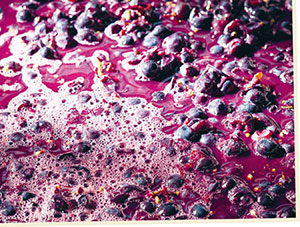
Macerating berries undergoing their alcoholic fermentation. This process occurs spontaneously with healthy berries that have been farmed cleanly.
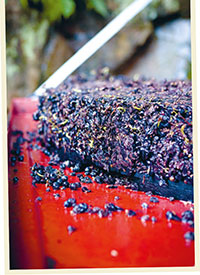
Red grape pomace left over after pressing. In organic vineyards, this is then typically used for mulching or composting.
DEFINING AND REGULATING NATURAL WINES
Authorities are beginning to respond. In the fall (autumn) of 2012, for instance, the Association des Vins Naturels (AVN), a French association of natural wine growers (see Where and When: Grower Associations, pages 120-21), met up with the fraud squad and other officials in Paris, to discuss the possibility of submitting a definition of their production methods for official registration so that it might be used to verify wines hitting the market as “natural.” As Bernard Bellahsen, owner of Domaine Fontedicto and one of the AVN founders, explained, “They finally understood that there was a difference between organic and natural, so they asked us to fine-tune our definition and officially lodge a ‘cahier des charges’—or rulebook. It’s pretty simple where they are concerned. They simply apply the law. As an association, you provide them with points of reference and they work out if the products correspond or don’t. It just has to be registered and declared officially.” While it remains vague, however, they can’t run checks, which is why, as in Italy, the authorities are unhappy about the use of the term. In fact, in the fall of 2013, just before the first edition of this book went to print, the Italian government launched a parliamentary inquiry into “natural wine” in an attempt to provide greater clarity. To date it is still on-going.
What is certain is that, as a group, natural wines are growing. Perhaps it is this success that has engendered such controversy from within the ranks of some of the wine trade: “There’s no such thing as natural” or “How dare they imply my wines aren’t natural?”
In fact, some natural growers don’t like the term “natural” either. “It’s not a great word because it can be twisted in all sorts of directions,” says Anne-Marie Lavaysse of Le Petit Domaine de Gimios, a vineyard in the Languedoc, in France. Bernard Bellahsen agrees: “When I talk about natural wine, I say ‘it’s just fermented grape juice. I use grapes, grapes, and more grapes, and the result is wine. That’s it.’ Admittedly, it isn’t especially succinct, but it’s truer because lots of things can be called “natural,” making them seem healthier, when often it isn’t the case. It’s very delicate terminology.”
So, yes, perhaps “natural wine” is not the best term to use. In fact, it’s a shame that any adjective should have to be added to set apart a wine that is what dictionaries everywhere describe it to be. But, unfortunately, the world has moved on and today wine doesn’t just mean “fermented grape juice,” but “grape juice fermented with X, Y, and Z,” so the term “wine” has to be qualified to set these particular examples apart.
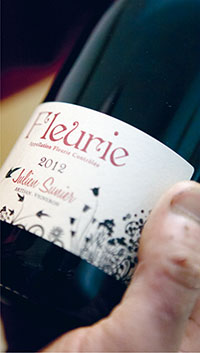
As things currently stand there is no compulsory, legal inclusion on a label that enables drinkers to tell natural wine apart.
THEY FINALLY UNDERSTOOD THAT THERE WAS
A DIFFERENCE BETWEEN ORGANIC AND NATURAL...
And, yes, perhaps a less contentious term, such as “live,” “pure,” “raw,” “real,” “true,” “low-intervention,” “authentic,” “farmhouse,” or some such, would be less provocative. But it is the term most commonly used globally to describe wines of this nature. For whatever reason, people all over the world have chosen to use the term “natural,” in the face of all the alternatives, to describe healthily grown, nature-friendly, low-intervention wines that truly express their place of origin. As Piedmontese natural wine grower Stefano Bellotti, of Cascina degli Ulivi, puts it, “I’m not thrilled about the term ‘natural,’ but that’s the way it is. If you don’t like the word ‘table,’ you can’t just call it a ‘chair.’” So, natural wine it is.
Whether or not it is certified (or indeed certifiable), natural wine does exist. It is wine from vineyards that are farmed organically, at the very least, and which is produced without adding or removing anything during vinification, apart from a dash of sulfites at most at bottling. This makes it the closest thing there is to the good, old, fermented grape juice that Google believes wine to be.
“Pick grapes and ferment” may sound easy and self-evident, but, once you start picking apart the reality, you soon realize that in its purest form natural wine is almost a miraculous feat—a great balancing act between life in the vineyard, life in the cellar, and life in the bottle.
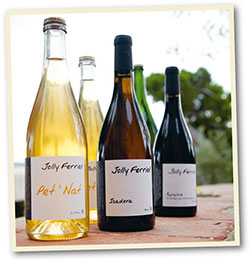
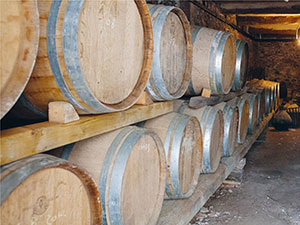
Natural wines come from vineyards that nurture and protect life, from vine to cellar to bottle.